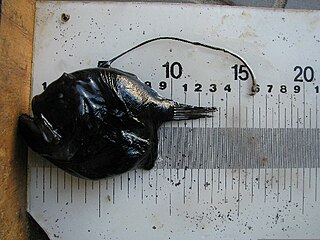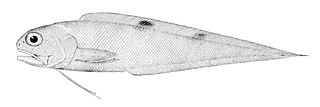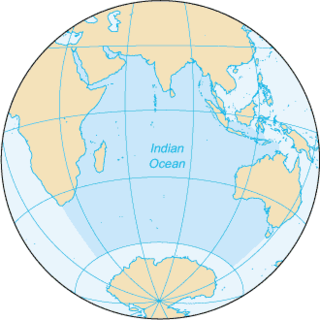Squalus is a genus of dogfish sharks in the family Squalidae. Commonly known as spurdogs, these sharks are characterized by smooth dorsal fin spines, teeth in upper and lower jaws similar in size, caudal peduncle with lateral keels; upper precaudal pit usually present, and caudal fin without subterminal notch. In spurdogs, the hyomandibula is oriented at a right angle to the neurocranium, while in other sharks, the hyomandibula runs more parallel to the body. This led some to think that the upper jaw of Squalus would not be as protractile as the jaws of other sharks. However, a study that compared different jaw suspension types in sharks showed that this is not the case and that Squalus is quite capable of protruding its upper jaw during feeding.

Gymnothorax is a genus of fish in the family Muraenidae found in Atlantic, Indian and Pacific Ocean. With more than 120 species, it the most speciose genus of moray eels.
Iago is a genus of houndsharks in the family Triakidae. The name comes from the villain in William Shakespeare´s Othello.

Poecilopsetta is a genus of small righteye flounders mainly found in deep water in the Indo-Pacific. Two species, P. beanii and P. inermis, are from the West Atlantic.

Chascanopsetta is a genus of flatfish in the family Bothidae found in deeper parts of the Pacific and Indian Oceans with a single species, C. lugubris also occurring in the Atlantic Ocean. It contains nine member species.

Bufoceratias is a genus of fish in the family Diceratiidae.

Anthias is a genus of colourful fishes in the subfamily Anthiadinae. Most species are found at deep reefs in the tropical and subtropical Atlantic, often well below depths reachable to a scuba diver. A single species, A. noeli, is found at deep reefs in the East Pacific.

Oneirodes is a genus of fish in the family Oneirodidae.

Neobythites is a genus of cusk-eels.

The scaldfishes comprise a genus, Arnoglossus, of lefteye flounders. They are found in the Pacific, Indian and Atlantic Oceans, including the Mediterranean and Black Sea. They are entirely absent from most of the Americas; the only exceptions are A. coeruleosticta and A. multirastris found off Chile. The genus include both species found in shallow and deeper water. The largest species reaches 28 cm (11 in).

Engyprosopon is a genus of small lefteye flounders. They are found in the Indo-Pacific, ranging from shallow coastal waters to depths in excess of 400 m (1,300 ft).

Parabothus is a genus of fish in the family Bothidae native to the Indian and Pacific Ocean.

Psettina is a genus of small lefteye flounders native to the Indo-Pacific.

Syacium is a genus of large-tooth flounders found in the Atlantic and Pacific Oceans. With the exception of S. guineensis from the Atlantic coast of Africa, all species are from the Americas. The largest species in the genus reaches 40 cm (16 in) in length.
Tarphops is a genus of large-tooth flounders native to the northwest Pacific Ocean.
Plagiopsetta is a genus of crested flounders native to the western Pacific Ocean.

Samaris is a genus of crested flounders native to the Indo-Pacific.

Bembradium is a genus of deep-water flatheads native to the Pacific Ocean.
Grammoplites is a genus of flatheads native to the western Pacific Ocean and the Indian Ocean.
Paracaesio is a genus of snappers native to the Indian Ocean and the western Pacific Ocean, with these currently recognized species:















